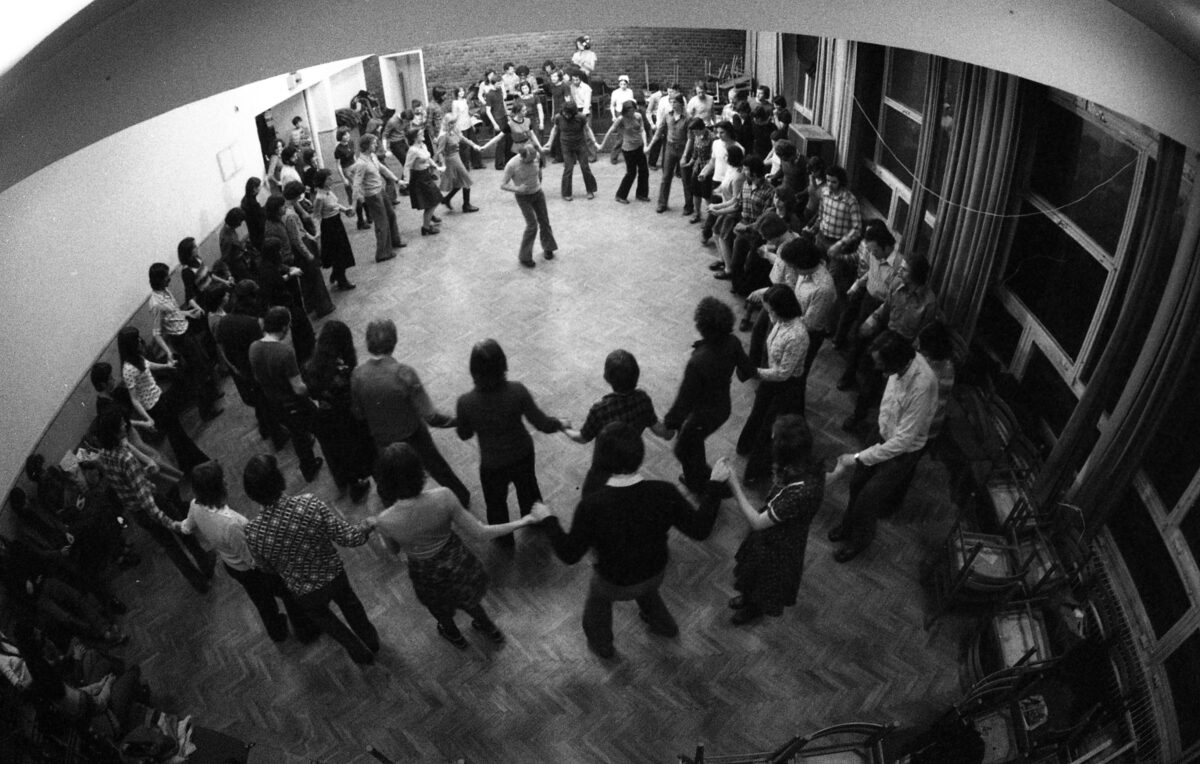Between Socialist Cultivation and Ethnonationalism
Note from LeftEast editors: This is the first of a two-part interview with LeftEast’s Mary Taylor. The result of a collaboration with Mérce within ELMO – The Eastern European Left Media Outlet, it was also translated into Hungarian by Kristóf Nagy and Ferenc Kőszeghy.
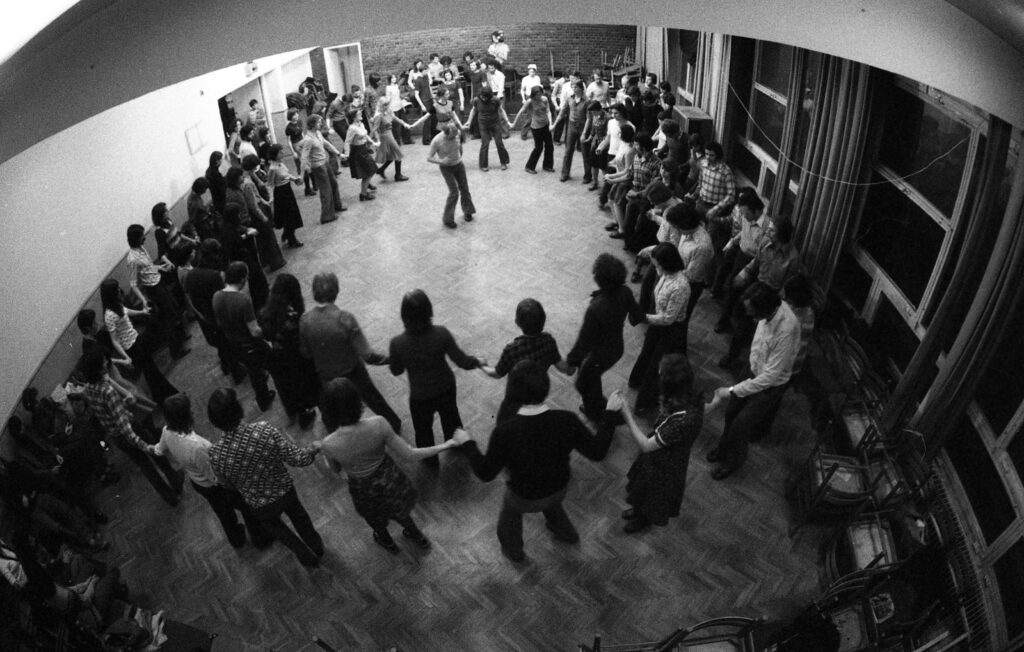
Mérce: Your book about the Hungarian táncház (dance-house) movement, titled Movement of the People: Folk Dance, Populism and Citizenship was published in 2021. What is táncház? How would you define this movement which came to be in Hungary’s socialist era? In your book, you argued that the movement’s core value is participation, or dancing as a medium of socialization. What kind of communities were created and how through dancing together in the dance-houses of the socialist era?
Mary: Táncház is a social movement that arose in the socialist period that has continued to grow and transform throughout the so-called transition until today. Over five decades, táncház practices have been key to cultivating in tens of thousands of people the capacities to dance “Hungarian folk dances” in everyday life.
A major innovation of táncház was to bring folk dance off of the stage and diminish the difference between performer and audience. It created a space for social dancing that is participatory and it also created a pedagogical system to encourage “regular people” (not performative dancers) to learn the dances. So in that way it was able to recruit a lot of people who were not necessarily “folk dancers,” as well as people who might otherwise not have taken interest in folk culture.
We can also say that social dance operates quite differently than staged dance. Historically, we see that social dancing has a role in cultivating certain values and in socializing people to conduct themselves in appropriate ways, both within the dance as well as at the dance event. In the villages from which táncház took its name and forms, villagers were being cultivated according to village community norms, whether related to gender or status comportment, or to the harvest cycle.
The dances themselves involve everything from posture to rhythm to the ability to hear musical cues and interacting with dance partners. Táncház took shape by adopting village forms as part of the aesthetic pursuit of authenticity and related ideas of function. As with many revivals, focusing on form, táncház adopted certain forms of etiquette from the village – for example as related to gender roles, even as it adapted or abandoned other things. Táncház in Szék (the village in today’s Romania from which the revival borrowed its name) was traditionally a courtship dance event for adolescents. Although the revival attempted to be faithful to many of the social elements of the dance event, it was and is open to all ages.
Another important thing is that through the táncház movement a “national repertoire” is (re)produced out of dances that were specific to villages or regions. Learning the dances (and visiting Transylvania) participants cultivate in themselves a knowledge of the geography of so-called Greater Hungary, much of which is outside today’s Hungarian nation-state. Participating in táncház also tends to put people in direct contact with those places and people who live over the borders, contributing to a degree of what we might call sympathy or empathy. So, in that sense the táncház revival has a role in the cultivation of national or nationalist conduct, as well as sensibility. In the socialist period, táncház played an important role in teaching people about Transylvania and about certain kinds of “national” practices and histories-including the struggle of ethnic Hungarians in Romania-that were not covered by the Communist education system and were even suppressed at times. This is related to the sense of opposition participants experienced. But much of this cultivation comes from the way in which certain forms and interpretations were centered. The movement did not need a centralized leadership with a political ideology to do any of this, and without such a thing it can be seen as being and having been quite autonomous and flexible.
Most of these things are also true of the postsocialist period, but if we get into the differences between these periods the main distinction is how these knowledges that people cultivate in themselves via participation in táncház connect to politics. Although táncház goers today still generally argue that it is a cultural (or spiritual) movement, rather than a political one, in 2004 táncház participants went out in large numbers to vote yes to dual citizenship for over-the-border Hungarians on the basis of this sympathy.
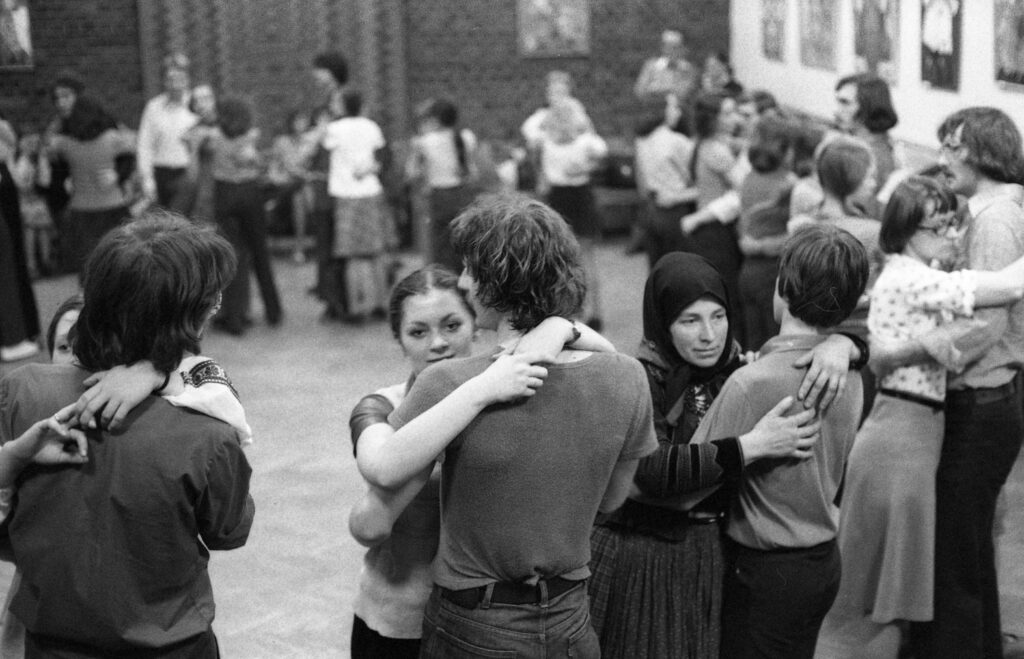
The táncház movement spanned the Hungarian socialist and postsocialist periods, but, as you argued, it has constantly changed alongside the changes of Hungarian regimes. You start your book by saying that the story of the táncház movement is “ultimately one about hegemony.” So, let me ask you: how can the history of the táncház movement provide insight into the inner workings of hegemony?
My book looks at the conditions out of which this movement arose as well as how it has changed over time. While I take a deeply historical approach, the ethnographic core of the book was researched through participant observation from 2000 until 2006, but intensively in 2004/2005. In the course of writing the book I came to see it as a story of hegemony. I use this term in the tradition of the Italian Communist Antonio Gramsci, who used the term to capture how consent for a social order is produced. He argued that the ruling classes do not govern simply through force but by gaining the consent of many through the production of common sense (senso commune) in the cultural sphere. Hegemony is never complete and common sense is always contradictory, and we can say that táncház both shapes society and is shaped by it. Popular culture is a terrain of struggle and it is in the process of struggle that cultural practices and social movements like táncház contribute to reproducing a social order or transforming it. These processes became a focus of my analysis.
During my research I was intrigued by the use of the term művelődés (which I translate as civic cultivation) by the interwar populists and early táncház founders and their supporters. I became interested in how táncház participants are involved in a process of cultivating their political personhood. I became interested in how táncház, like other népi [1] movements, has contributed to the consolidation of alliances of social groups – so called hegemonic blocks – that construct and maintain power arrangements or social orders.
As your book details, the táncház movement was started by left-wing populists – people with strong connections to the interwar “népi” movement, but after 1946 they were tucked away in marginal cultural jobs, that is where they laid the foundations of the táncház movement. What are the links between the táncház movement and the népi movement, and how do they differ?
It would be an exaggeration to say that the táncház movement was started by left-wing populist (and by this I am referring to the left wing of the interwar népi movement). Táncház arose in the 1970s from the labors of many people whose political positions are not always easy to pin down, partly because political positioning had a different character in the socialist period than today. The people who brought táncház to life included members and choreographers of folk dance troupes, avant-garde and beat musicians who took interest in folk music, and researchers of folk culture, folk dance, and music. I think very few of them identified as populists, much less as left populists. It is notable, however, that a number of others who supported táncház had ties to the movement to build Népi Kollégiumok (Folk Colleges), where a number of them participated in their dance troupes.
One of the most important and powerful supporters of the movement was Iván Vitányi, who identified very strongly as a left populist. He considered táncház to be a realization of goals that groups in which he took part in the interwar period could only dream of: a rapprochement of the urban and peasant populations essential for the kind of social justice that the interwar népi activism he identified with envisioned. Influenced by utopian socialists, he also believed that folk practices could be key to forming the kind of community life essential to a communist society. Like many left populists, though, he was capable of bearing /tolerating a lot of nationalist expression, and this begs the question of the presence of ethnonationalism on the Hungarian left more generally.
Although táncház participants told me that populists had been tucked away in marginal jobs, I actually wonder how marginal Vitányi’s job really was. After all, he ran an institution that was the main methodological advisor for the entire system of socialist culture houses – he became the director of the Népművelési Intézet (Institute for Culture). This institution, which transformed many times, was originally founded by népi writers Gyula Illyés and László Németh. It was shut down and then opened again in the early socialist period, and has undergone a number of changes until today. Given that Németh is counted among the more right-leaning of the interwar populists, the story is complicated.
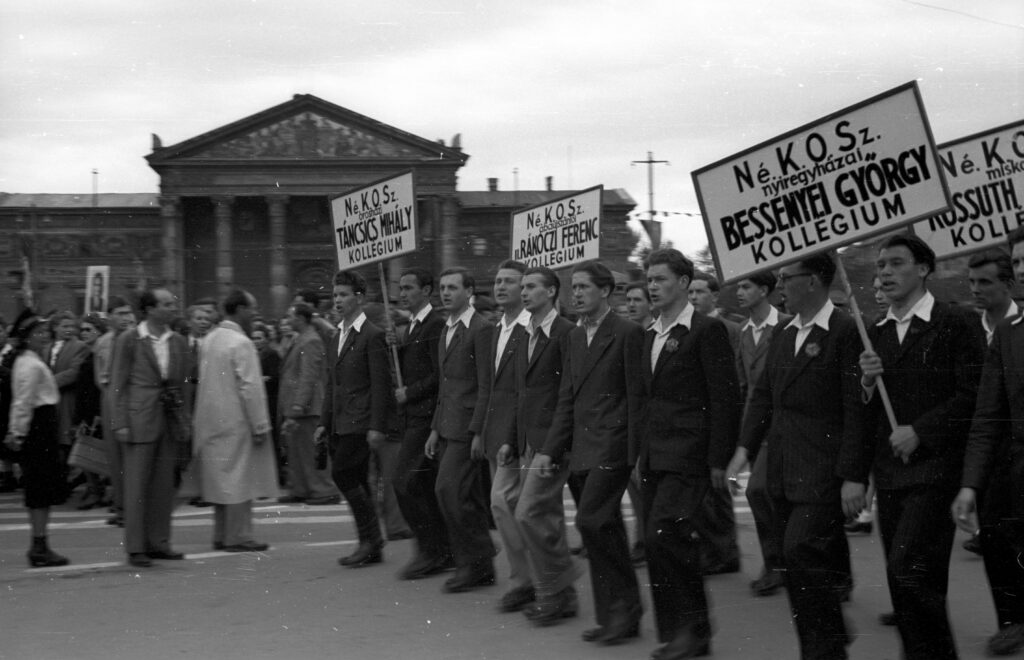
So the link between the népi movement and the táncház movement is already historically and politically complicated, but how do these movements differ?
One difference is that while both táncház and the interwar népi movement emphasized culture, the latter also had an explicitly political character. Their platform of land redistribution, voting rights, and cultural validation was presented in explicitly political manners by especially left populists who took part in the March Front, the movement to build Népi Kollégiumok, and the National Peasant Party. Interwar populism was tied quite explicitly to issues of citizenship (political, social, and cultural) for peasants in Hungarian society who faced dire economic and social conditions.
The interwar népi movement was invested in civic cultivation. They insisted that along with land redistribution and voting rights, cultural validation was necessary to lift peasants and agrarian workers out of their misery to achieve dignity and justice. They believed that all Hungarians should come to appreciate or adopt some of these practices, and they pursued this with their program of népi-nemzeti művelődés (folk national cultivation).
Táncház did not develop an explicitly political program for a number of reasons. Many political paths were foreclosed during state socialism and culture was an available terrain. Táncház was from the start about dance and music. We might say that a focus on the music /dance practices of specific Transylvanian villages, which itself was an effect of the ethnographic record and preferences of the people who produced it, contributed to interest in the plight of ethnic Hungarians in Romania. This ethnonational emphasis ties it to the rightist side of the népi movement and to irredentist traditions, but also to human rights campaigns around ethnic minorities and even liberal nationalism. Yet the question of justice for land-poor and landless peasants and agricultural workers as an oppressed social class, a shared interest of left and right populists in the interwar period, faded away.
Earlier, you said that many political paths were foreclosed, so the táncház movement couldn’t be political in the foreground. Few people outside of the party had the opportunity to do so in the first decades of existing socialism. But culture cannot be apolitical, so was there any ideological, even political tension between the party and the movement?
This has also been one of my questions about this era of táncház. It was a complicated relationship. There were people within the party who were very disapproving of the táncház movement because it signaled nationalism to them. Vitányi is important because he is both a populist and a leftist. Although he was critical of the Communist party, he ended up having a significant job in the state socialist cultural apparatus. And he and people like him argued that táncház was not primarily nationalist but in fact made of elements that were important to communist or socialist cultivation. Vitányi drew on the utopian socialists to make the argument that folk art and culture are non-bourgeois and essential for community-building.
So on that layer you have Vitányi taking part in these kinds of arguments within the party and state-socialist apparatus. But on another layer he is in charge of the Népművelési Intézet, so he is able to use state socialist resources to support the rise of táncház as a (perhaps type of utopian) socialist project.
Within táncház itself there were different types of ideological things going on. Lots of people made arguments that it promotes socialist cultivation, but it is often hard to say if they were arguing that because they had to or if they really believed it. Certainly, many people who took part in táncház considered it an anti-Communist activity or an explicitly nationalist activity. We can see how the nation and nationalist impulses came to be attached to an oppositional stance to the Communist regime in this environment.
These ideological debates were (and always are) attached to material conditions, or even better: the two are in essence not separate. Your book painstakingly explains the material conditions that were necessary for the emergence of táncház. As you explained, with the decentralizing and marketizing New Economic Mechanism (NEM) introduced by the government in 1968, and the economic crisis beginning in the 1970s, state subsidies for culture were cut and entrepreneurialism was encouraged. This changed the role of culture houses, giving rise to the beat movement, and alongside it (often with shared musicians), the táncház movement. So táncház, and the freedom and democratization represented by it, was linked to a sudden marketization. What were the benefits and the downsides of this, in my opinion, problematic relationship?
As you say, the opening to entrepreneurial activity with the NEM was important to the emergence of all kinds of activities, economic and cultural. The specific context for táncház was the system of houses of culture, as well as workers and KISZ (Association of Young Communists) clubs where the movement emerged and flourished into an important subcultural activity. Interestingly, houses of culture were still the main context for táncház events when I was doing my fieldwork. These cultural institutions were resources that had been subsidized by the socialist state even after they were forced to cover part of their budgets through entrepreneurial activity. They continued to be subsidized by the postsocialist state. Even before the NEM, the governance of these spaces had allowed for cultural activities to take place in them without performance permits precisely because their role was to encourage amateur activities and cultural production as part of the project of socialist cultivation. But the need to earn part of their operational budget (after the NEM) made it possible, even necessary, for culture houses to innovate and to have more diverse programming.
The NEM was an adaptation to crisis, and by the 1980s there was a much deeper crisis. The NEM, which seemed to be a very successful economic model, relied heavily on social reproductive labor for accumulation. The processes of liberalization it opened up had a decentralizing effect on the planned economy as well as on decision-making in the cultural sphere and more generally.
Like you, I have tended to see this marketization/liberalization as an opening of the flood gates to the end of socialism and the beginning of neoliberalization. Yet there are some good arguments that this did not have to be the case. We know that the embedded market during state socialism operated quite differently than the market seen in the postsocialist period. Late Hungarian socialism thus offers important information about what a successful socialist (or non-capitalist) mixed economy could look like. Some would argue, inspired by the work of Karl Polányi, that this “problematic relationship” is something that might have become a viable mixed economy.
There are of course serious questions regarding what happens with the opening up to private property forms and markets in property, also when people in powerful positions are poised to take advantage of those privatizations. And there are also real questions about the pressures of the broader global political economy on a semiperipheral country like Hungary that have to be considered when we think about how market socialism might have been viable in the longer run or could be viable again.
In summary, it was a complicated relationship. Táncház benefited from the state socialist cultural infrastructure, from the populists who worked in it, and from this liberalization that opened up new possibilities for directing the uses of that system. It is possible that táncház could have only come about due to this liberalization. But as for the benefits or downsides for táncház, it would depend on who you ask. Táncház survived the transition quite well, but changed and continues to change. I guess more than anything it teaches us that it simply isn’t true that there was no “civil society” as people call it, in socialist Hungary. This so-called civil society does seem to be more present under these later somewhat decentralized market socialist conditions. While I do think the emergence of táncház is perhaps a particularly socialist phenomenon, it certainly did not reproduce a socialist society.
Before we move on to the changing political role of táncház in the postsocialist era, let me ask one more question about the socialist era. You have explained that táncház has a role in cultivating community, but it also has a role in cultivating national consciousness. Can you imagine a dance movement without the cultivation of nationalist consciousness but with the cultivation of a sense of community? Can this medium, dancing, be used to make connection with our shared past, and with each other as people living together but without nationalist ideas?
To answer that I think we have to examine the Hungarian term nép (roughly: folk or people, from which népi – of the folk, popular, or populist – comes). The term itself contains a tension between the idea of the folk as working class or the oppressed and simply meaning “the nation.” Even the socialist usage of the term points to the folk as the basis of the nation-state, and the bigger problem is that the idea of the nation-state itself imagines the state as the caregiver, if you will, for the nation. I think what this boils down to is that the way that we understand the nation always has a kind of an ethnonational character underlying it. So even if we see a tension in the term nép we can’t separate it into a fully socialist versus a fully nationalist position. The problem is the way in which the nation is tied to some sense of essence.
The question is: if a set of practices are organized around the dances and the music of the nép – the folk, the people, in a broad sense – can they be detached from the ideas of the essentialized nation? That’s a really big question but it is a challenge for me. Especially when we consider that oppression is multiple, and therefore so is “the people.”
[1] Nép is the equivalent of Volk or narod. It translates into English as people or folk. Népi, “of the folk/people” was commonly translated to English as populist in the interwar period, but can also be translated as popular, people’s, or folk.
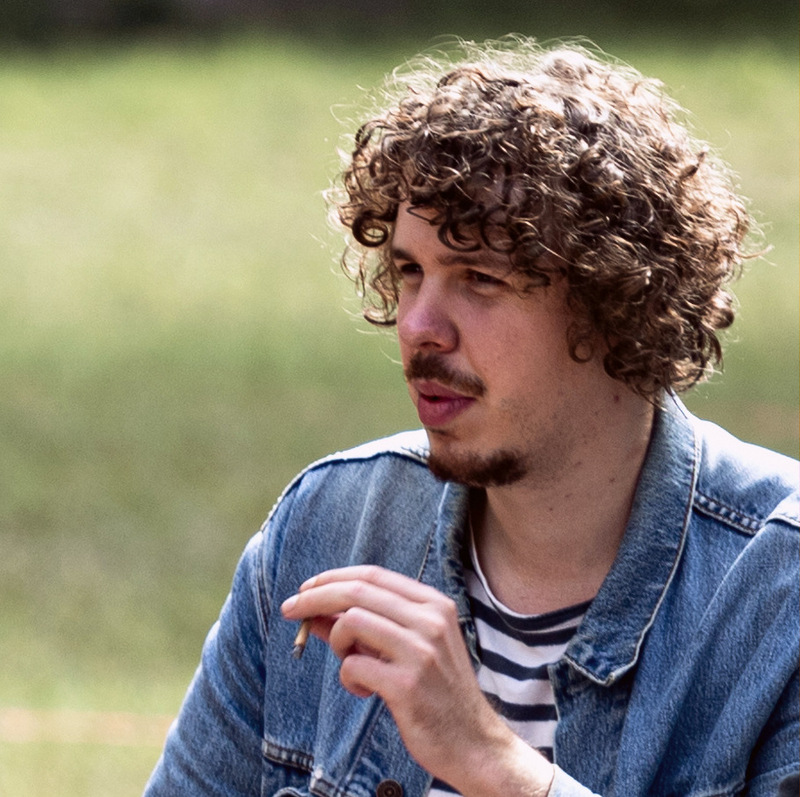
Ferenc Kőszeghy is a Ph. D. student in Literature, member of the Mérce staff and the Spark Movement.

Mary Taylor is Assistant Director at the Center for Place, Culture and Politics, Graduate Center, City University of New York. Situated at the intersection of anthropology, urbanism and dialogical art, her militant research focuses on sites, technologies, and politics of civic cultivation, social movement, and cultural management; the relationship of ethics and aesthetics to nationalism, cultural differentiation, and people’s movements in socialist and post-socialist East-Central Europe and the United States. She studies and organizes radical alternative pedagogical activities with others.

